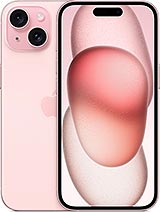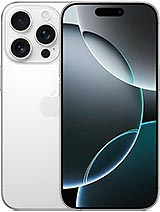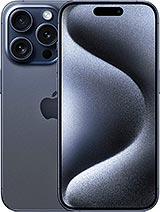Apple iPhone 16 review

The competition
A base 128GB iPhone 16 will set you back USD 799/GBP 799/EUR 949/INR 79,900/CNY 5,999/JPY 124,800. If you want a storage upgrade (which you probably should, since 128GB is kind of limiting nowadays), 256GB will cost you $100/£100/€130 more on top of the base, while the 512GB model goes for $200/£200 premium on top of the base one.
 Left to Right: iPhone 16, iPhone 16 Pro, iPhone 16 Pro Max, iPhone 16 Plus
Left to Right: iPhone 16, iPhone 16 Pro, iPhone 16 Pro Max, iPhone 16 Plus
That's a pretty penny to pay for a new phone. Then again, the vanilla iPhone 16 remains the cheapest of the current iPhone crop, which is the reason why at least some buyers will go for it. The other potential justification for wanting one is, of course, size. With a 6.1-inch display-diagonal, the iPhone 16 remains one of the few compact flagships on the current smartphone market.
As much as we like offering Android-powered alternatives to the iPhone, by all major accounts and statistics, Apple's smartphone lineup is currently an isolated island. Not many people are jumping ship to Android. An iPhone user will inevitably also be an iPhone buyer at some point, so it makes sense to mostly look at the iPhone 16 in the context of Apple's own selection of devices.
Exploring the alternatives to an iPhone 16, we should probably first tackle the obvious ones based on the aforementioned buying justifications. The iPhone 16 might be the cheapest current iPhone, but "current" is a bit of a broad definition in Apple's realm. The Cupertino giant is still officially selling the iPhone 15 and even the iPhone 14 generation through its website.
We don't feel quite comfortable lining up the iPhone 14 next to the iPhone 16 as an alternative. The vanilla iPhone 15, on the other hand, is a great option. You will be missing out on the new Camera Control button and, naturally, some performance. Perhaps some Apple Intelligence, at least to some degree, since there must be a reason for Apple to jump from 6GB of RAM to 8GB of RAM in the new iPhone 16. And you won't be able to enjoy the autofocusing ultrawide. If none of these sound like major compromises, a new base 128GB iPhone 15 currently costs around USD 830/GBP 575/EUR 690.



Apple iPhone 15 • Apple iPhone 16 Pro • Apple iPhone 15 Pro
If money is no object, the obvious choice is just to get an iPhone 16 Pro. That gets you all of the latest and greatest Apple has to offer in a compact form factor. That said, the "small Pro" grew a bit this year. To be fair, that gets you a bigger display and battery on top of all the new tech, like the revamped 5x telephoto. Still, you arguably aren't missing much by going for the iPhone 15 Pro instead and are saving money in the process.
 Left to Right: iPhone 16, iPhone 16 Plus, iPhone 16 Pro Max, iPhone 16 Pro
Left to Right: iPhone 16, iPhone 16 Plus, iPhone 16 Pro Max, iPhone 16 Pro
Our verdict
It is hard to give the iPhone 16 any sort of "innovation crown" this year. Not that Apple is one for major changes, but even so, last year's iPhone 15 arguably brought about much more noticeable changes with the new OLED with a Dynamic Island, the move to USB Type-C and the new 48MP main camera. All of these attributes have naturally been carried forward to the iPhone 16.

As for its own list of contributions, there is the new autofocusing ultrawide camera, the Camera Control button and a focus on Apple Intelligence in a big way. It is still mostly in the realm of promises and incoming features, but at least the hardware has been beefed up to presumably power all of the AI.

Just like every year, we find ourselves in the tough position to choose whether to recommend the iPhone 16 or not. Just like every year, Apple's entry-level current phone is solid through and through, with a delicate mix of lots of familiarity and a sprinkle of innovation. As usual, the Android realm offers better hardware and overall value, though that almost seems irrelevant and beside the point. Ultimately, if you are on an older iPhone, the iPhone 16 is a perfectly viable and satisfactory update path for you.
Pros
- Subtle redesign, especially eye-catching around the new camera island.
- Great build quality, water-resistant up to 6m deep, industry-leading front glass scratch and shatter resistance.
- Very bright OLED screen, HDR10, Dolby Vision.
- Solid battery life for the size.
- Excellent loudspeaker quality.
- Great all-around performance.
- Great photo and video quality across all three cameras. Autofocus on the ultrawide is much appreciated, and the new Camera Control is cool.
- Every iPhone comes with at least five years of iOS updates.
Cons
- A lot more expensive than corresponding Android alternatives.
- The display is 60Hz; there is no Always On option, and the bezels are thicker than the Pro models.
- No charger in the box, and charging isn't particularly fast.
- Apple's iOS restrictions can be off-putting to newcomers to the ecosystem.
- Apple Intelligence features are region-limited for the time being.
- No dedicated telephoto camera.
Reader comments
- Ackeboy
- 10 Apr 2025
- Mgb
The iphone 16 is a great phone dont get me wrong but heres the catch, a nice case that will have my camera control button save costs 55$ and if i get one that has no protection there it will cost me 750$!! its crazy, 60 youre noticing the 60 fps scre...
- Mr shuvo Islam
- 28 Mar 2025
- 6p}
Very nice
- Anonymous
- 14 Mar 2025
- HBf
Come to see the camera review of the I16 after reading the one from the I16e? Where was the reviewer of the I16e when the I16 was tested? The difference in tone is like night and day for what are similar experiences. Here the I16 has an exce...
